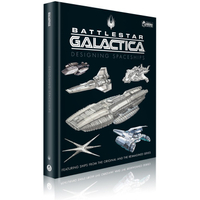Here's an exclusive 1st look at 'Battlestar Galactica: Designing Spaceships' from Hero Collector
Try saying "Colonial Viper" in your mind without it being in a old-school Cylon voice. You can't, can you?

Those talented folk at Hero Collector — the same people who make all those incredible models of sci-fi spacecraft — have launched a brand new "Battlestar Galactica" compendium that focuses purely on the conceptual artwork used to create the amazing spacecraft seen in both the original and the reimagined series.
Available to pre-order now for $34.95 at Amazon, "Battlestar Galactica: Designing Spaceships" takes a deep dive behind the scenes on two generations of the classic science fiction series and tells the story of how visual effects pioneers created the iconic spacecraft for the original Universal Pictures show "Battlestar Galactica" in 1978 and how a digital revolution saw those designs interpreted for Ronald D. Moore's reimagined series in 2003. You can also pre-order it directly from Hero Collector here for £20.99 (about $29 USD) and save £7 off its normal £27.99 price.
This book, contains 202 pages of incredible artwork, including original designs by Eric Chu, Andrew Probert and Ralph McQuarrie. Accompanying the amazing illustrations is information about the designs and interviews with many of the people responsible. Needless to say, the book's author, Mark Wright, is a big fan of "Battlestar Galactica."
Battlestar Galactica: Designing Spaceships (Hero Collector): $34.95 at Amazon
"Growing up, I was a sucker for anything with spaceships and ray guns and the Galactica, the original series Galactica, is one of the finest screen starships of all time. Oh yeah, I put that up there with the Enterprise, the Liberator from 'Blake's 7' and the Eagle transporter from 'Space: 1999' — they're all up there," he told Space.com.
Some of the very finest conceptual artwork ever seen comes from ideas for sci-fi films; all you have to do is look at the work of Syd Mead and Rob Cobb, the legendary artists behind many, if not most, of the iconic production designs seen in "Blade Runner," "Alien" and "Aliens," "Robot Jox," "Back to the Future" and many more movies. And now for the first time, the artwork associated with "Battlestar Galactica" has been gathered together and published for fans of the show to enjoy.
"From McQuarrie’s design of the original Galactica and its Cylon counterparts, to the digitally rendered, more modern equivalents, we've uncovered the stories behind their creation, inside and out. And we've attempted to be as extensive as possible, although sadly there are inevitably omissions where concept art and CG renders have been lost to the years and fast-moving TV production schedules," Wright said.
Related: Real-Life Astronaut Dishes on 'Battlestar Galactica'
Get the Space.com Newsletter
Breaking space news, the latest updates on rocket launches, skywatching events and more!
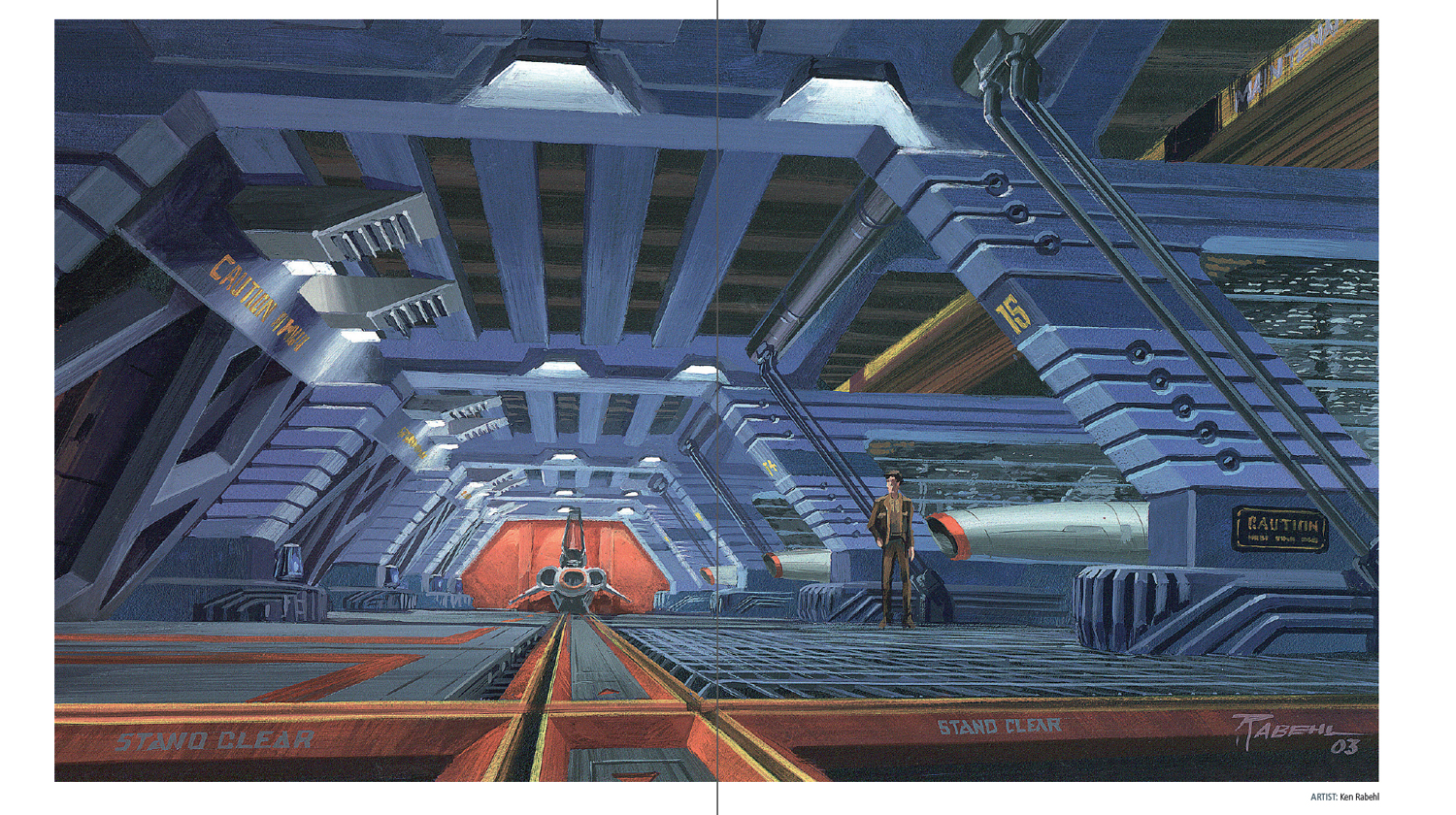
Tragically, so many of these great artists are no longer with us. McQuarrie passed in March 2012, Mead in September 2019 and Cobb in September 2020. With changing technology, it means this method of production design is something we will see considerably less of in the future. For example, the book also contains designs from the excellent prequel mini-series "Blood & Chrome." This is set before the events in the reimagined show, during the very first Cylon War and focuses on a then-young Viper pilot named Lt. William Adama, callsign Husker, (played by Luke Pasqualino). It's only 90 minutes long in total and was first shown as a webcast in 2012. However, since it had a considerably smaller budget than the four-season long 2004 show, improvisation was required and CGI was used much more extensively.
This also meant that the production design, which required backward engineering from both the Colonial Viper Mk II and the Cylon Raider — from the 2004 show — in order to produce earlier incarnations, was all done by computer.
"There was no detail because all the foundations were done on the re-imagined series by the time they'd got to 'Blood & Chrome' and so that chapter's a little bit different in the book. Thank God for Doug Drexler [computer graphics supervisor] who was there on the ground working on that show and was able to give us some commentary on these ships. I'd say that's more of a commentary chapter because it was produced so differently to even the re-imagined series. That leap in digital VFX techniques by that stage is immense," Wright said.
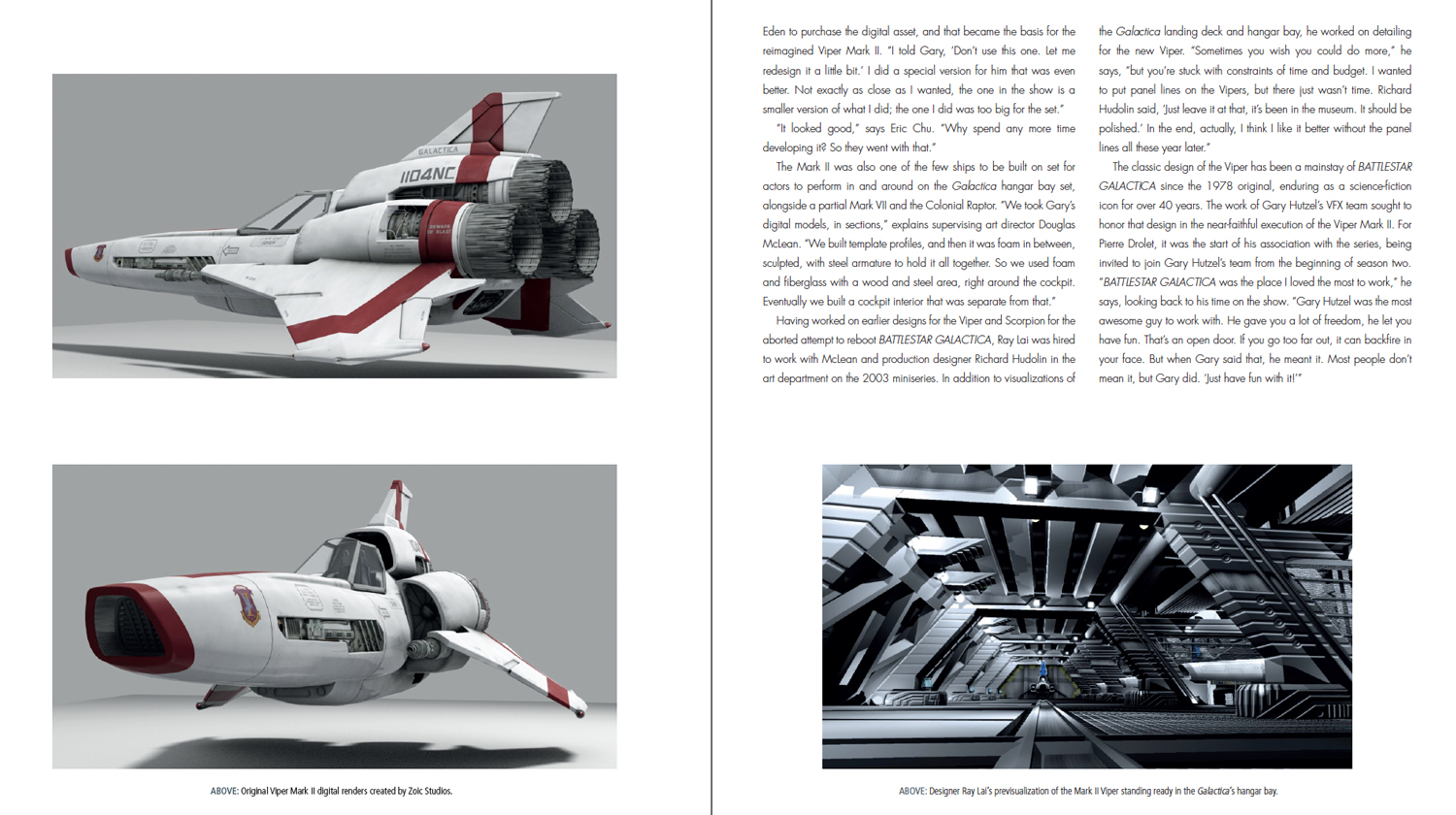
In addition to containing stunning artwork and never-before-seen illustrations, Wright has spoken to and interviewed some of the talented minds who worked on "Battlestar Galactica" including Jose Perez, Pierre Drolet, Ray Lai and Richard Livingston.
"In the production of this book, we have been granted invaluable insight from the concept and storyboard artists, CG supervisors, digital model makers, and art directors that brought these ships to the screen," Wright said.
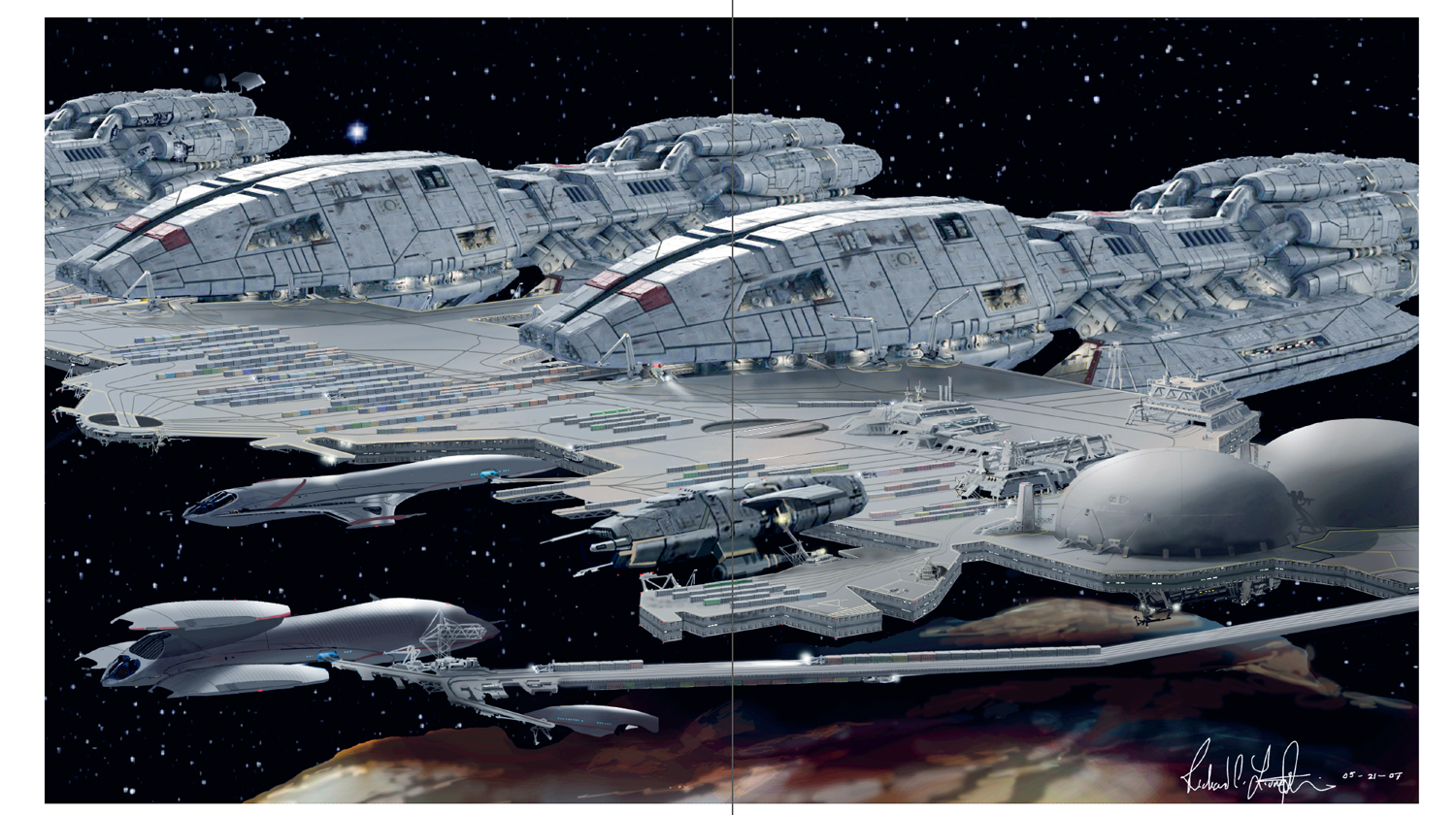
One of his favorite chapters is the one that covers the Blackbird. This was a totally new idea to the existing BSG universe and the story of its creation is told in the epic episode "Flight of the Phoenix" (S02, E09). Frustrated at the dwindling number of available Vipers due to loss, battle damage and wear-and-tear, Chief Tyrol (Aaron Douglas) begins to build a new fighter from scratch. At first, his idea is laughed at, but as the struggle of day-to-day life on the Galactica continues, many see the project as a creative outlet, providing a sense of purpose and something positive to distract their minds from the bleakness of their situation.
However, the already short supply of replacement parts means some imaginative solutions have to be implemented and once the airframe is finished, Tyrol wonders where he will find enough metal to make the plane's skin. That is, until Lt. Agathon (Tahmoh Penikett) suggests using a carbon composite instead, a material that as yet, isn't in short supply onboard the Battlestar. And so the very first "Colonial stealth fighter" is constructed in one of the very best episodes of "Battlestar Galactica."
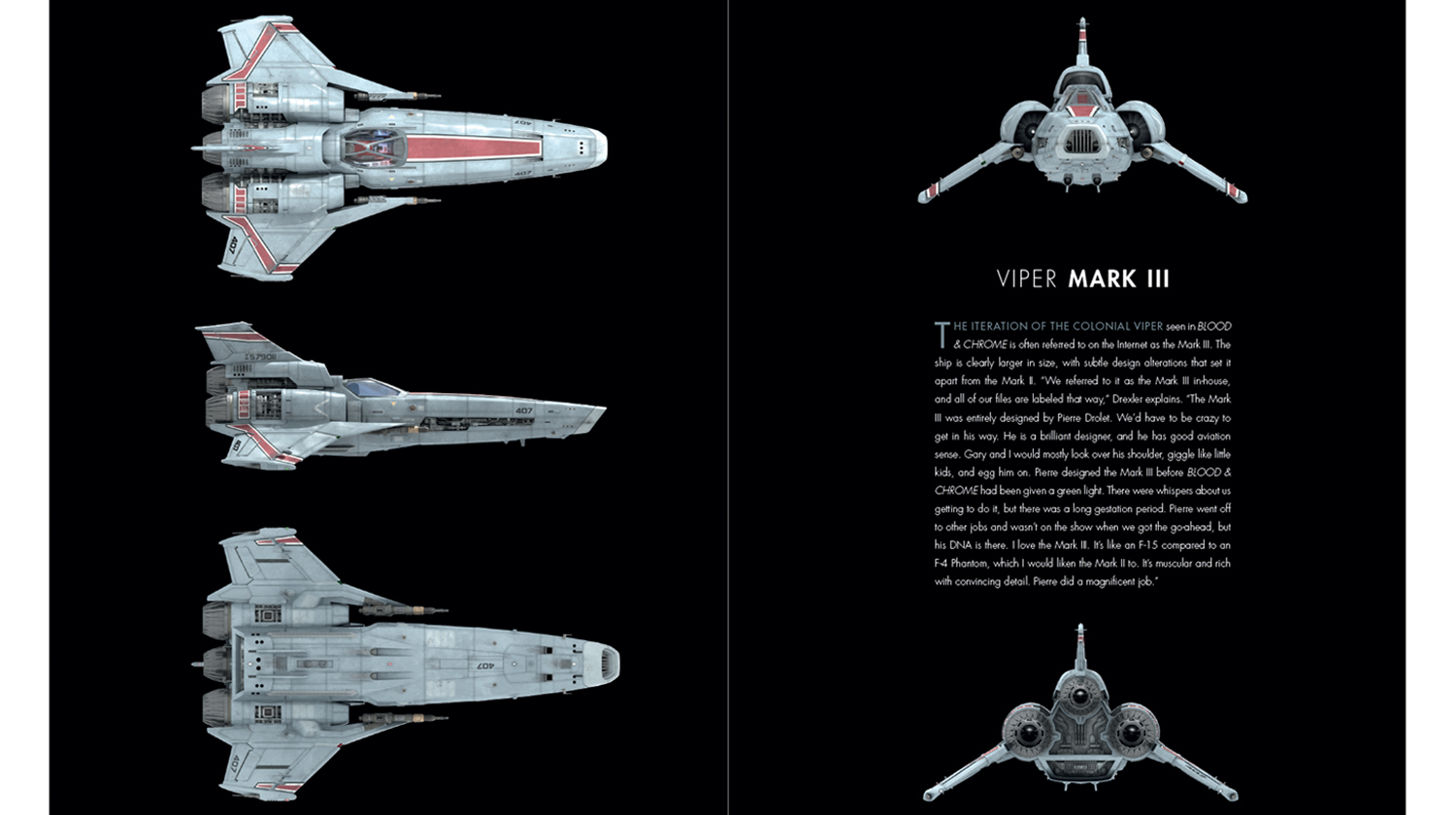
"Oh yeah, I love that chapter," Wright laughs. "I love it because the Blackbird was, basically, created by the art department, rather that the effects team. It was built physically, from scratch rather than being designed first. I love how there's lots of little sketches, showing different elements of its construction that were drawn as they went along. And that we were able to cover this in so much detail in the book, is great."
"Battlestar Galactica: Designing Spaceships" is available to pre-order now for $34.95 at Amazon. You can also pre-order it directly from Hero Collector here for £20.99 (about $29 USD) and save £7 off the normal £27.99 price.
All four seasons of the 2004 "Battlestar Galactica" are available on Amazon Prime for $1.99 per episode or $24.99 per season. The New York Comic Con "Battlestar Galactica Retrospective" panel featuring Edward James Olmos (Cmdr. Adama) and Mary McDonnell (President Laura Roslin) live, in person, can be found here.
Follow Scott Snowden on Twitter. Follow us on Twitter @Spacedotcom and on Facebook.
Join our Space Forums to keep talking space on the latest missions, night sky and more! And if you have a news tip, correction or comment, let us know at: community@space.com.
When Scott's application to the NASA astronaut training program was turned down, he was naturally upset...as any 6-year-old boy would be. He chose instead to write as much as he possibly could about science, technology and space exploration. He graduated from The University of Coventry and received his training on Fleet Street in London. He still hopes to be the first journalist in space.
